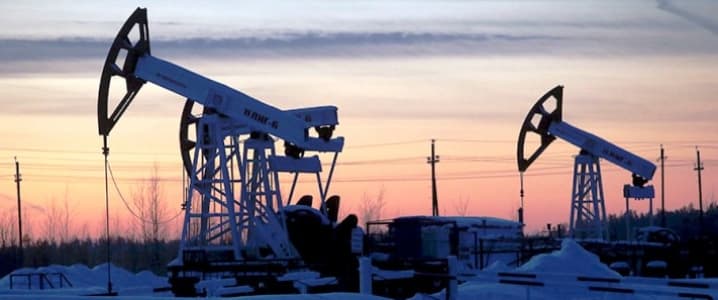The volume of new oil discoveries hit a record low in 2016, the result of severe cuts to exploration budgets amid plummeting oil prices. The number of new conventional drilling projects also dropped to the lowest level in 70 years, according to the International Energy Agency.
Across the globe, the oil industry only discovered 2.4 billion barrels last year. That is a small fraction of the 9 billion barrels that companies discovered on average each year for the past 15 years.
Not only did new discoveries hit a record low, oil companies also declined to move forward on developing oil reserves that they already had in their possession. The industry gave the greenlight to drill only 4.7 billion barrels last year, about a third less than the previous year and sharply lower than the annual average before oil prices collapsed in 2014. In fact, the IEA says, the volume of oil that received final investment decisions was lower than at any time since the 1940s.
(Click to enlarge)
The cuts were inevitable in a year when WTI dropped to $27 per barrel, inflicting widespread financial damage across the industry. Conventional drilling projects, many of which have long-term payback periods, dropped low on the priority list for oil companies. The decision to spend billions of dollars on an offshore project that takes years to come online and many more years to payback the initial investment became a luxury that only the largest oil companies could afford.
Related: Is The Geopolitical Risk Premium In Oil Overrated?
That stands in sharp contrast to the fortunes of the U.S. shale industry, which saw a strong rebound in 2016 even as global exploration and development dried up. Moving forward on one offshore project can costs billions, but shale wells cost only a few million bucks apiece. The production will be a few orders of magnitude smaller than the offshore well, but the short-cycle nature and low-stakes of each well have made shale much more attractive in today’s oil price environment.
As a result, the U.S. rig count surged in the second half of 2016 and companies large and small piled into shale plays, particularly in the Permian Basin in West Texas. Shale output is on the rebound and with drilling on the rise, production gains are surely baked into 2017 regardless of what happens to oil prices. Many shale companies have breakeven prices in the $30s and $40s per barrel, well below the prevailing market price.
But U.S. shale production still only accounts for a little over 5 million barrels per day, or a little more than 5 percent of total oil production worldwide. By way of comparison, conventional oil production accounts for 69 million barrels per day.
That disparity had the IEA issuing a warning in its report: U.S. shale cannot meet future demand on its own. Upstream investment is expected to mostly stabilize this year, but not grow. As a result, 2017 could mark the third consecutive year of spending declines, an unprecedented occurrence. That will undoubtedly lead to another year of disappointing discoveries.
With global oil demand is set to grow by about 1.2 mb/d each year, demand is going to overtake supply in the relatively near future, even if record levels of oil inventories give the appearance of a massive glut. “Every new piece of evidence points to a two-speed oil market, with new activity at a historic low on the conventional side contrasted by remarkable growth in US shale production,” the IEA’s executive director, Dr. Fatih Birol, said in a statement. “The key question for the future of the oil market is for how long can a surge in US shale supplies make up for the slow pace of growth elsewhere in the oil sector.” Related: World Bank Maintains Oil Price Forecast At $55
The IEA sees trouble ahead. By 2022, demand could grow by more than 7 mb/d over 2016 levels. But in a March report from the IEA, the Paris-based energy agency only predicted 3.3 mb/d of new supply coming from non-OPEC countries, led mostly by U.S. shale. That sets up a sizable gap between supply and demand that will have to be made up by OPEC. OPEC could theoretically reestablish a lot of its lost leverage in the ensuing years, although it could be too much of a good thing if it actually struggles to keep up with demand.
ADVERTISEMENT
The end result will be a much tighter oil market and higher prices towards the end of the decade and into the 2020s. Of course, high oil prices could induce more supply, but the supply response from, say, Canadian oil sands or offshore projects in the Gulf of Mexico, Brazil or elsewhere will take years to come to fruition. In this scenario, then, there will be a rough couple of years in the early 2020s when prices are high and volatile.
By Nick Cunningham of Oilprice.com
More Top Reads From Oilprice.com:
- African Citizens Face Steep Fines For Not Going Green
- Why Is China Funding Unsustainable Coal Projects In Pakistan?
- Exxon Hikes Dividend Yet Again, Despite Low Oil Prices




















An actual oil shortage would force the global economy to shrink. You can't do work without liquid fuels. That could lead to a financial collapse due to the amount of debt throughout the financial system. It won't take much of a recession to begin a collapse.
The black gold will be the next black swan.